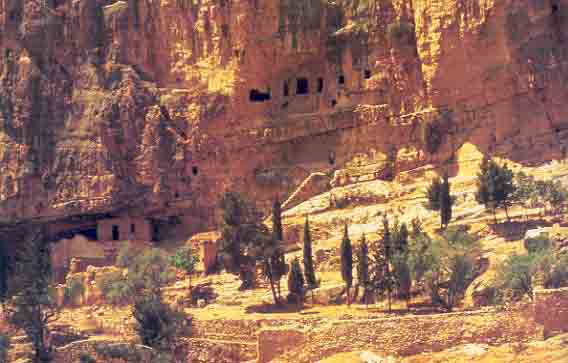Image Details

Zev Radovan, courtesy Yizhar Hirschfeld
A cliffhanger. Cut into the walls of a sheer cliff in the Wadi el-Fara, 15 extant cells once formed part of the monastery of Pharan. A rock-cut staircase (center) led to a cave church (top center) on a cliff nearly 40 feet above the ground.
Pharan is the oldest surviving monastery of the laura type, in which monks lived in isolated cells connected to each other and to central buildings by paths (laura is Greek for lane or path). The other major monastery type is the coenobium, from the Greek koinos bios, meaning communal life. Unlike their counterparts in lauras, monks in coenobia shared a daily regimen of work, prayer and meals. St. George’s is an impressive example of a coenobium.
